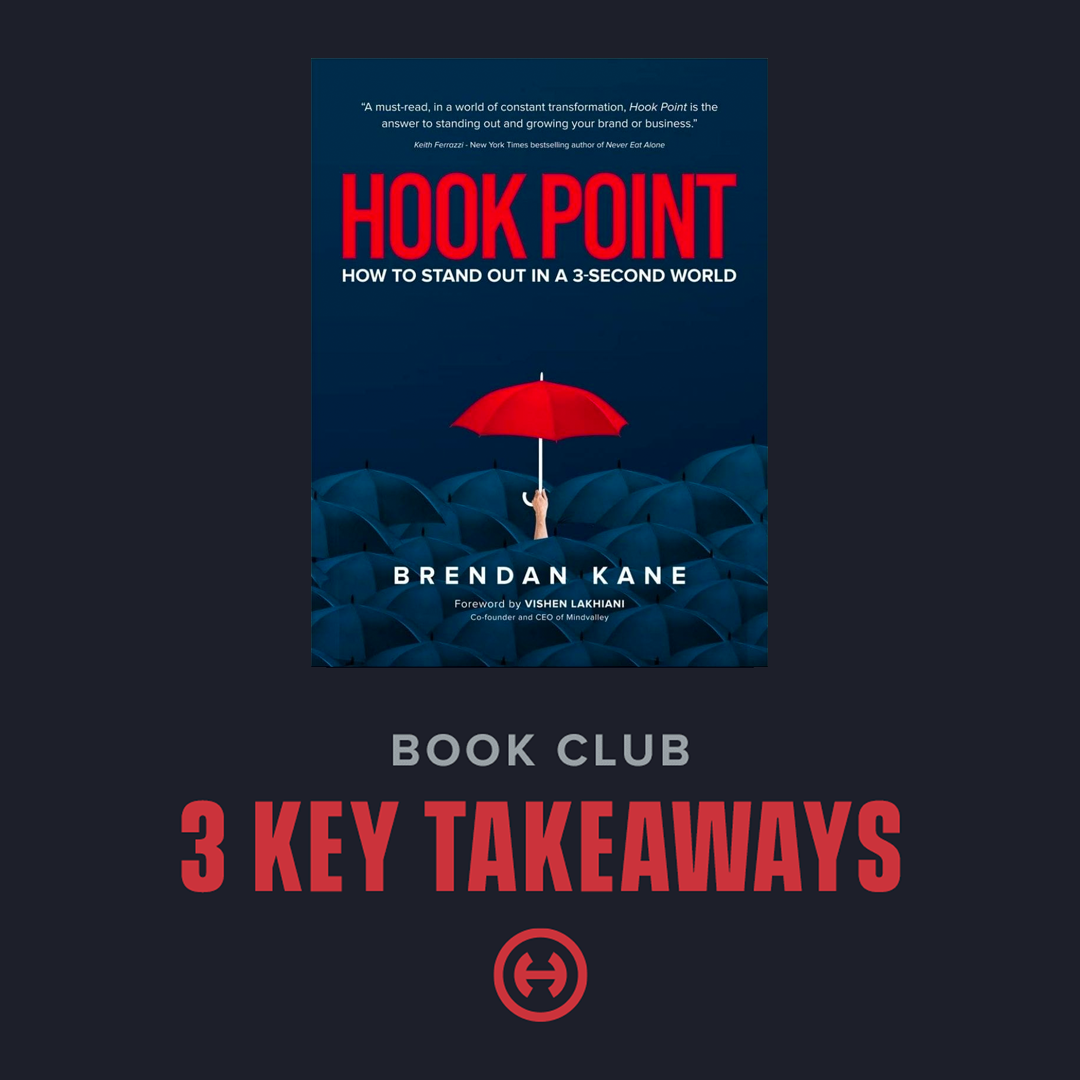February’s book club shook up our comfort zone by challenging us to think outside the box with “Hook Point: How to Stand Out in a 3-Second World” by Brendan Kane. Kane taps into effective strategies to innovate and scale businesses by creating persuasive brand messages in a saturated world. If you want to get hooked on this read, consider picking up a copy here. If not, here are three key takeaways from our team.
Creating Your Hook Point.
With over 60 billion messages sent out on digital platforms each day, Kane theorizes you likely have less than three seconds to stand out and capture your audience’s attention. So, how can brands do this and rise above all the noise? The answer: Give them a Hook Point. With so many choices available at audiences’ fingertips, whatever message your content wants to convey has a higher propensity of grabbing hold if you create a compelling Hook Point. Kane says the key formula is:
Grab Attention + Hold Attention = Consumer Engagement
Creating Hook Points that charm audiences into engaging with your brand can begin with a combination of elements – phenomenal copy, insightful takeaways from your favorite podcaster, a downright hilarious meme that says just how you’re feeling or perhaps a product or service you offer. Whatever the hook may be, ensure that it’s rooted in something your brand believes in – because the audience likely will too.
Strengthening Your Hook Point.
Authenticity, trust and credibility go a long way in strengthening your Hook Point so it will stick. People will bite on your hook because they trust your brand to mean what they say. So, if you keep giving your target a return on their time investment, their engagement will endure. Hook Points should be rooted in your brand purpose in an organic way – a hook is only as effective as the substance you have to back it up. Don’t force hooks into zones or topics that don’t fit your brand identity; take your time in finding a hook that’s right for you – it isn’t an overnight process. Brands must prove they can walk the talk over time. Brands should only lean into Hook Points that feel credible to their messaging and build a stronger bond of trust among audiences.
Testing Your Hook Points.
It’s not about guessing or putting all your eggs in one basket; brands should be looking to iterate and test until they find the right answer that drives results. Find opportunities to try different types of content on different channels and see which resonates best. Variation and shareability are your friends when testing a Hook Point – and can extend your audience reach to viral proportions. Consider yourselves Hook Point mixologists and experiment with different blends of text, video, color, humor and whatever else enhances your desired message – and make sure that it pays off for audiences to keep them coming back for more.
Want to explore new Hook Points for your brand that stand out in an ultra-competitive social and digital space? Email Nate Tredinnick at ntredinnick@hiebing.com to get started.
